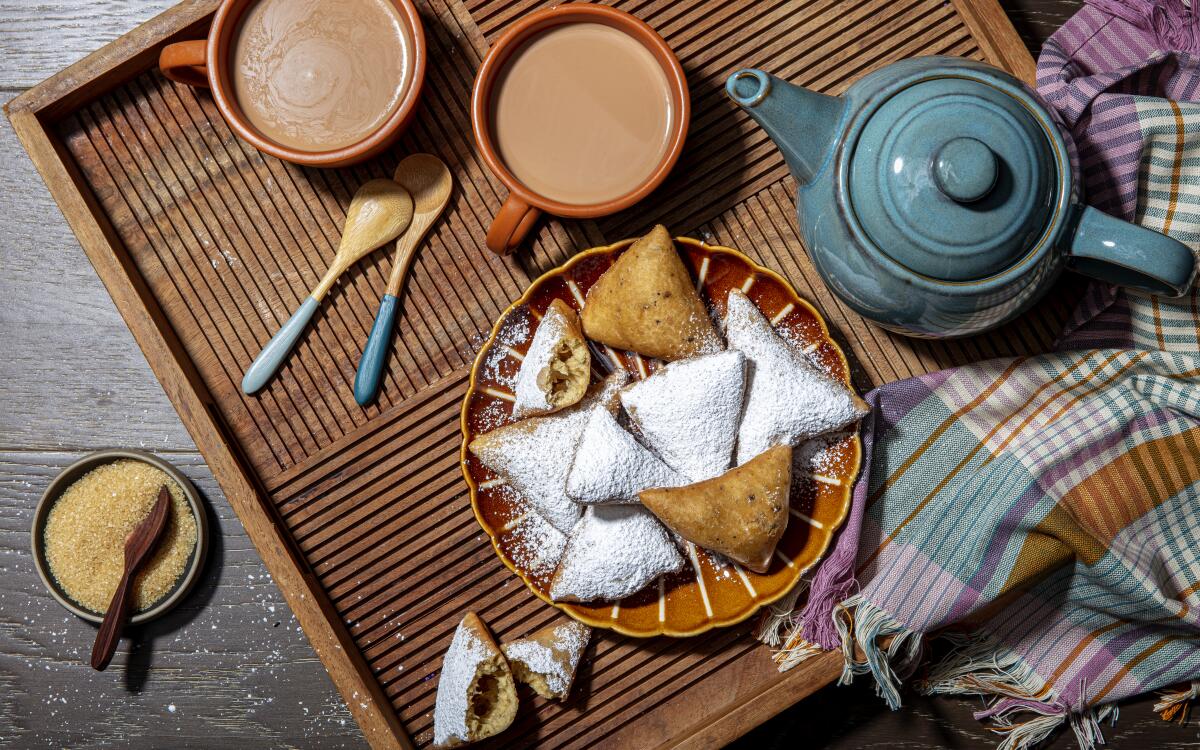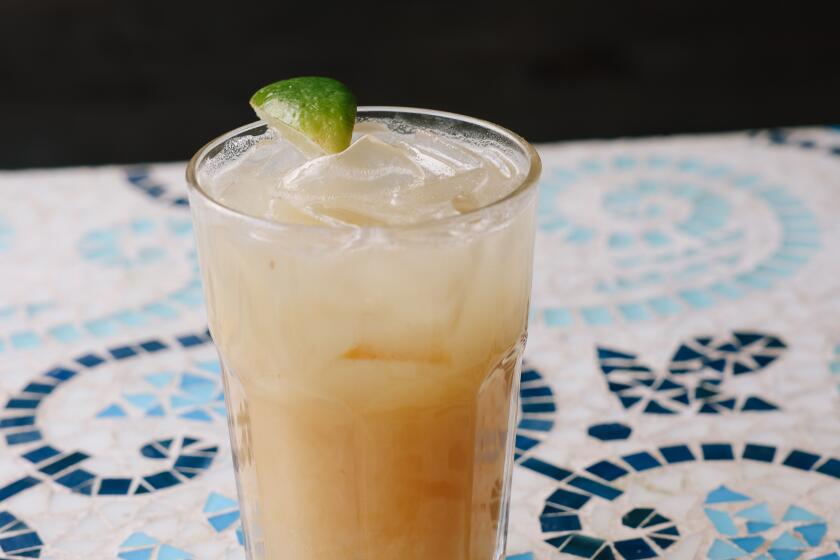Coconut and Cardamom Mandazi with Kenyan Chai

In Kenya, Tanzania and Uganda, sweet doughnuts called mandazi are eaten for breakfast with chai throughout the year. They’re often flavored with cardamom or cinnamon, but Moju opts to use a bit of both. She grinds the cardamom coarsely, not fine, a key distinction that delivers pops of flavor.
Mandazi are often eaten with coffee, Milo — a Nestlé-produced chocolate drink — or chai. Moju serves her mandazi with her family’s take on the latter, which is less sweet than many American versions. The drink’s spice mix, known as chai masala, is ginger-forward and warm from black pepper. If not used in making chai, use the masala in place of plain ground ginger in any holiday baking recipes that call for that spice.
Using a mortar and pestle or the flat side of a knife, gently crack the cardamom pods to open them, then pull out the black seeds, letting them fall into the mortar and pestle; discard the pods. Grind the cardamom seeds very coarsely; if you don’t have a mortar and pestle, place the seeds in a small resealable bag and gently crush with a rolling pin. Measure out 1 teaspoon cracked cardamom seeds and save the rest for another use.
In a large mixing bowl, whisk together the flour, sugar, baking powder, salt, cinnamon and the cracked cardamom seeds. Make a well in the center and pour in the coconut milk and egg. Starting in the middle, use a spoon to mix the dough (it might seem too dry at first, but keep mixing and it will eventually form a slightly sticky dough). Use your hand to briefly knead the dough until smooth, dusting your hand with flour as needed to keep the dough from sticking.
Generously flour a clean work surface, then place the dough on the surface and knead briefly until no longer sticky. Cut the dough into three equal pieces and shape each piece into a ball. Cover the balls with a kitchen towel or a sheet of plastic wrap and let rest for 30 minutes.
Meanwhile, pour enough oil into a medium saucepan to come 1 inch up the side. Attach a deep-fry thermometer to the pan and heat over medium-high heat until the oil reaches 350 degrees. Line a baking sheet with parchment paper.
Remove one ball of dough from under the towel and, using more flour if needed to keep the dough from sticking, flatten the ball with your hands (or roll with a rolling pin) into a 6- to 7-inch-wide disk. Using a sharp knife or pizza cutter, cut the disk into 8 wedges. Transfer the wedges to the prepared baking sheet. Repeat with the remaining two dough balls, using more flour if needed to create 24 wedges total.
When the oil is ready, add 6 to 8 wedges to the oil and let fry, undisturbed, until golden brown on the bottom, 2 minutes. Using tongs or a spider, flip the wedges and continue frying until golden brown all over and cooked through, 1 to 2 minutes more. Lift the mandazi out of the oil and transfer to a paper towel-lined plate to drain. Repeat frying the remaining wedges in three more batches.
As each batch is ready, dust the mandazi with a light blanket of powdered sugar and serve while hot with chai.
Kenyan Chai
Place a fine sieve over a quart-size heat-proof measuring cup or pitcher and line the sieve with cheesecloth. In a medium saucepan, pour in the milk and 1 cup water. Sprinkle in the tea, sugar and Chai Masala. Bring to a simmer over medium heat, stirring occasionally to dissolve the sugar. Once it comes to a boil and the surface of the liquid begins to rise, remove the pan from the heat and pour through the prepared sieve; discard the solids. Divide the chai among 4 warm mugs to serve.
Chai Masala
In an airtight container, combine the ginger, cardamom, cinnamon, pepper, nutmeg and cloves. Stir to mix evenly, cover and store at room temperature for up to 1 month.
Get our Cooking newsletter.
Your roundup of inspiring recipes and kitchen tricks.
You may occasionally receive promotional content from the Los Angeles Times.















